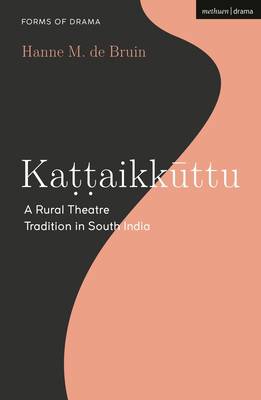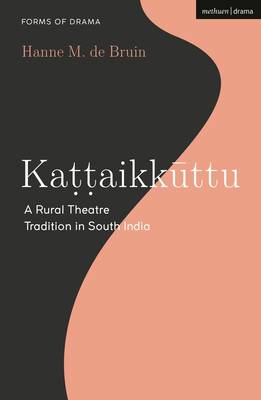
Bedankt voor het vertrouwen het afgelopen jaar! Om jou te bedanken bieden we GRATIS verzending (in België) aan op alles gedurende de hele maand januari.
- Afhalen na 1 uur in een winkel met voorraad
- In januari gratis thuislevering in België
- Ruim aanbod met 7 miljoen producten
Bedankt voor het vertrouwen het afgelopen jaar! Om jou te bedanken bieden we GRATIS verzending (in België) aan op alles gedurende de hele maand januari.
- Afhalen na 1 uur in een winkel met voorraad
- In januari gratis thuislevering in België
- Ruim aanbod met 7 miljoen producten
Zoeken
€ 115,45
+ 230 punten
Uitvoering
Omschrijving
This is the first book to offer a clear introduction to Kattaikkuttu (or Terukkuttu), a vibrant, vocal and physical outdoor Tamil theatre tradition from India. It describes the theatre's characteristic heroic nature as expressed through its principal, male kattaicharacters, explores its history, social status and ritual context, and examines the production of all-night plays.
After placing Kattaikkuttu in the wider, competitive context of the performing arts in India, Hanne M. de Bruin introduces readers to some of the debates about the form and provides an overview of the different elements that make up a Kattaikkuttu performance. It considers its performance spaces and the way the form has changed, such as its transition towards an independent and more professional theatre genre, as well as the opening up of the form to different castes and to women. It covers the production and frameworks of all-night performances, uses the Mahabharataplay Karna Moksamas a case study and examines recent changes in the Kattaikkuttu repertory.
In addition, the book looks in more detail at the role of the performer, including the training of a Kattaikkuttu novice, the performance score of actor-singers that underlie a specific role or vesam, and a seasoned performer's agency in interpreting well-known roles. Finally, the study turns to recent innovations, in particular the creation of new work and the Kattaikkuttu Gurukulam.
After placing Kattaikkuttu in the wider, competitive context of the performing arts in India, Hanne M. de Bruin introduces readers to some of the debates about the form and provides an overview of the different elements that make up a Kattaikkuttu performance. It considers its performance spaces and the way the form has changed, such as its transition towards an independent and more professional theatre genre, as well as the opening up of the form to different castes and to women. It covers the production and frameworks of all-night performances, uses the Mahabharataplay Karna Moksamas a case study and examines recent changes in the Kattaikkuttu repertory.
In addition, the book looks in more detail at the role of the performer, including the training of a Kattaikkuttu novice, the performance score of actor-singers that underlie a specific role or vesam, and a seasoned performer's agency in interpreting well-known roles. Finally, the study turns to recent innovations, in particular the creation of new work and the Kattaikkuttu Gurukulam.
Specificaties
Betrokkenen
- Auteur(s):
- Uitgeverij:
Inhoud
- Aantal bladzijden:
- 216
- Taal:
- Engels
- Reeks:
Eigenschappen
- Productcode (EAN):
- 9781350236615
- Verschijningsdatum:
- 19/10/2023
- Uitvoering:
- Hardcover
- Formaat:
- Genaaid
- Afmetingen:
- 127 mm x 203 mm
- Gewicht:
- 335 g

Alleen bij Standaard Boekhandel
+ 230 punten op je klantenkaart van Standaard Boekhandel
Beoordelingen
We publiceren alleen reviews die voldoen aan de voorwaarden voor reviews. Bekijk onze voorwaarden voor reviews.









